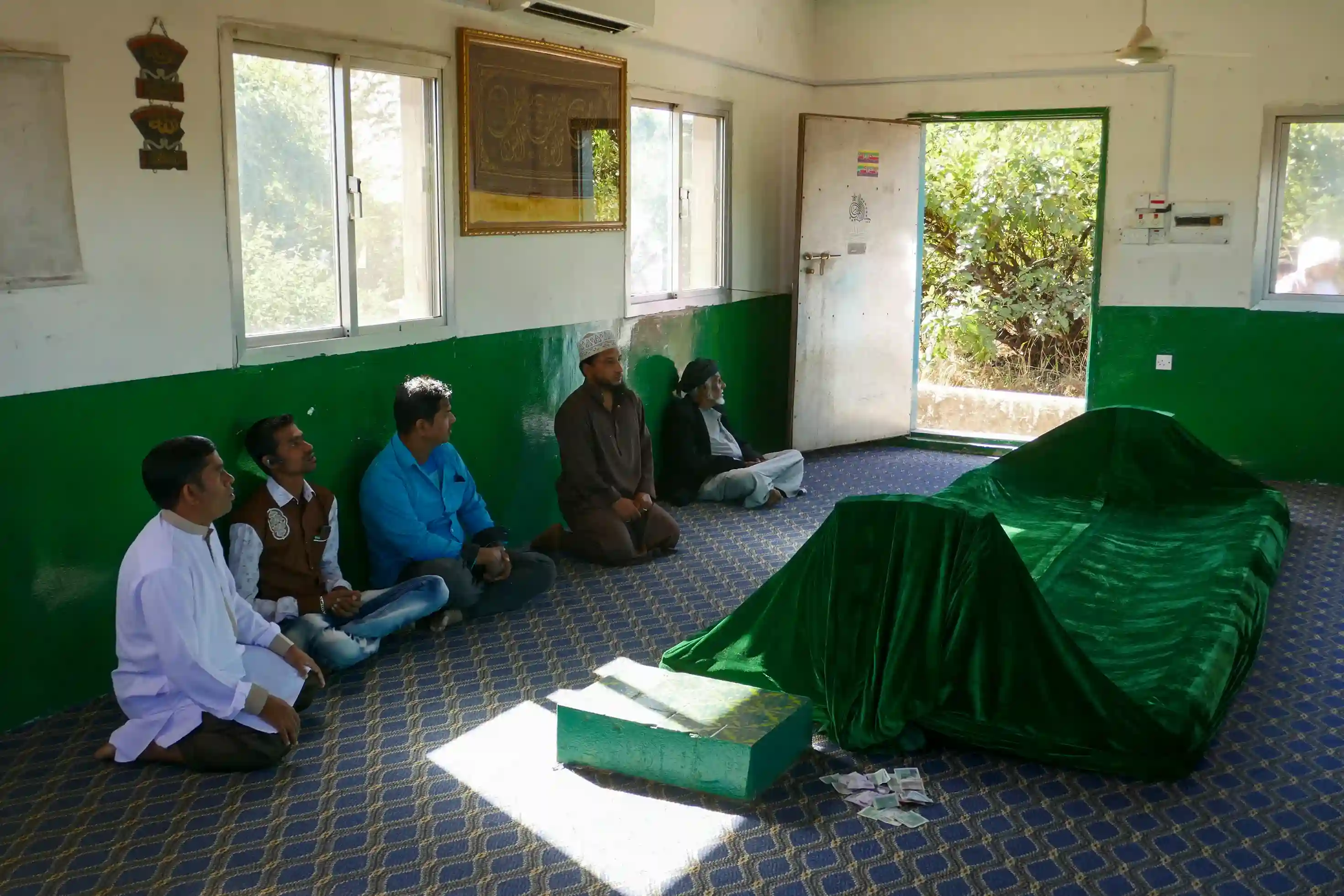Sacred Sites of Oman
Tomb of Prophet Job, Salalah
The Tomb of Prophet Job, known as Nabi Ayoub in Arabic, is located in the mountains near Salalah. This site is revered by Muslims, Christians, and Jews, all of whom recognize Job as a prophet. The tomb is a simple structure, and the surrounding area offers a peaceful and contemplative atmosphere. Visitors come to pay respects, offer prayers, and reflect on the story of Job's patience and faith. The site's serene setting among the Dhofar mountains adds to its spiritual significance.
Sultan Qaboos Grand Mosque, Muscat
The Sultan Qaboos Grand Mosque in Muscat is a significant Islamic architectural masterpiece and a place of worship. While not strictly a pilgrimage site, it holds deep religious importance. The mosque's intricate design, including its massive hand-woven Persian prayer carpet and stunning crystal chandelier, attracts visitors from around the world. It serves as a central place for Islamic prayer and learning, reflecting the importance of Islam in Omani culture.
Bibi Maryam's Tomb, Qalhat
Bibi Maryam's Tomb, located in the ancient city of Qalhat, is a historical and religious site. Although the city itself is now in ruins, the tomb remains a significant landmark. Bibi Maryam was a prominent figure in Omani history, and her tomb is a testament to the region's rich cultural and religious heritage. The site provides a glimpse into the past and is a place of historical reflection. The ruins of Qalhat, including the tomb, are a UNESCO World Heritage Site.
Al-Rustaq Fort
While primarily a historical fort, Al-Rustaq Fort holds religious significance due to its role in Omani history and its association with Islamic scholars and leaders. The fort's strategic location and its role in protecting the region have made it a symbol of Omani resilience and faith. Within the fort, there are areas of prayer and reflection, and its historical importance connects it to the religious history of Oman. It is a place where history and faith intersect.
The Ancient City of Qalhat
The entire ancient city of Qalhat, a UNESCO World Heritage site, can be considered a site of religious and historical importance. The ruins of mosques, homes, and other structures speak to the city's past as a thriving center of trade and Islamic learning. The city's maritime history and its connection to the spread of Islam in the region add to its significance. Although it is now a historical site, it represents a significant part of Oman's religious and cultural heritage.

Martin Gray is a cultural anthropologist, writer and photographer specializing in the study of pilgrimage traditions and sacred sites around the world. During a 40 year period he has visited more than 2000 pilgrimage places in 160 countries. The World Pilgrimage Guide at sacredsites.com is the most comprehensive source of information on this subject.

